I did it. I spent four and a half years in Chinese medical school. I packed the contents of a ton classes, more than a thousand hours of clinics, about a hundred books, and uncountable hours of study into my brain. And when all was said and done I found I had learned far more than the facts I plugged into my head. Acupuncture school isn’t so much of a school where you learn skills as it is a hero’s journey right out of the mind of Joseph Campbell. What follows are a few things I gathered that are even more valuable and longer-lasting than the Master’s degree I earned.
Be Present.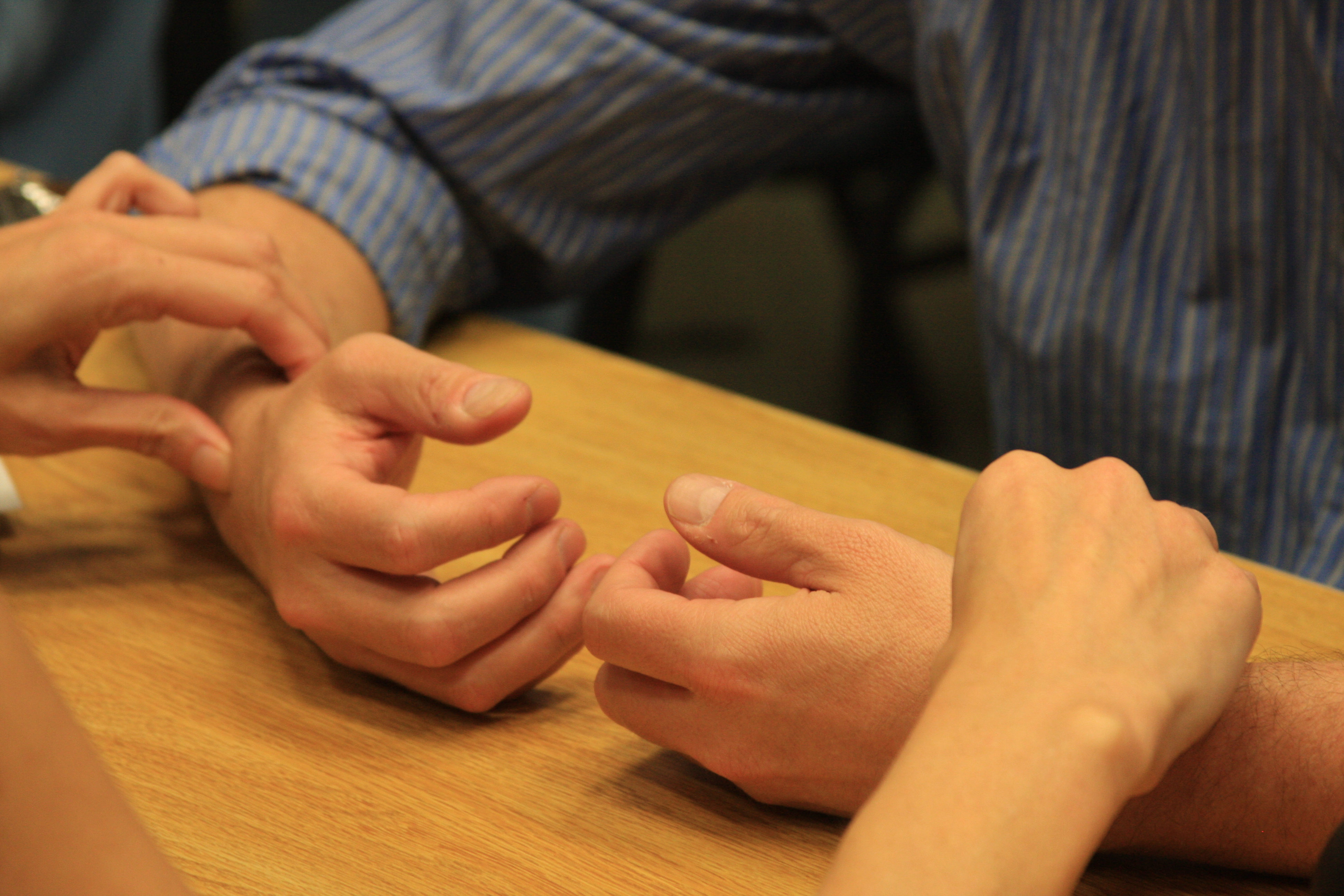.jpg?width=250&height=166&name=pulse_diagnosis_(3).jpg)
“Be here. You get one absence free. The 2nd one will cost you a full grade letter off the final grade. The 3rd one costs you 2 full letter grades. That would be bad. You’ll probably fail.” -Dr. Xiaotian Shen, Point Locations 1
“Be present” is a phrase that gets a lot of press in some circles. I suspect we all have some concept of what it means to be present, but being aware of the concept and actually being able to do it are two very different things. Our minds are in a constant state of living in either the past or the future.
Engaging in too much preoccupation with the past or excessive worry about the future means that we miss this moment that we are physically in. And this moment is all that there truly is. Only this moment is real. How much do we miss by not experiencing it? What amazing richness walked right past us while we were texting, worrying, fretting, or just daydreaming?
Living in this moment, paying attention to all that is and doing it purposefully can bring incredible peace and insight. Setting an intention to be conscious of this moment and to fully inhabit it also has amazing implications for healers. Truly hearing and being present when your client walks into your office is a tremendous gift that not many of us receive. Who among us doesn’t want to be truly seen and heard?
Setting time aside in your life to be quiet and present with your own mind gives you the calm center and peaceful soul you need to also offer this gift to another being.
Strive for Understanding.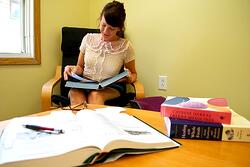
“Seek first to understand.” -Dr. Xiaotian Shen, Point Locations 1
I won’t lie to you: when Dr. Shen uttered this in my first acupuncture point locations class I knew it was profound, but I didn’t have the life skills to know this on a deep level. The majority of time I was in school I was driven to make A’s; anything less than perfection was unacceptable. But somehow during my quest for A’s I also knew that the concepts my amazing professors were offering to me also contained wisdom worth a thousand gold pieces and transcended the memorization of facts.
This is true of all of life. Wisdom begins when you realize that the surface facts you have been memorizing have a whole lot of depth and truth underneath them. When you understand the deeper structures you can tell which bits are important, you can see how and why the individual components fit together, and you can use the information you have memorized to draw new conclusions. Your actions become purposeful, efficient, and confident.
This takes time, patience, and the perseverance to build your foundational knowledge. It also takes the discipline to bypass the shiny fun tidbits (for now) in favor of making sure you are on solid ground.
Self-Confidence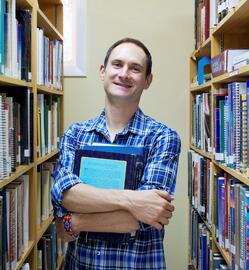
“All C’s spells Doc.” -Dr. Will Morris
I touched briefly on what I like to call The Tyranny of A’s in another point in this missive from my heart to yours. I thought I had defeated this devil, but when I started acupuncture school, there he was, sitting on my shoulder, screaming, “Not good enough!!” even when I got a low A. I drove myself mercilessly in school, which in turn caused a decline in my health and drove a wedge into my personal relationships.
It took a long time before I realized I was trying to please this unpleased-able demon that was actually my own internal critic telling me I had to be perfect and personable. I wanted my colleagues to see how brilliant I was so that they would acknowledge that I had worth and relevance. Deep down inside where I kept it good and hidden I didn’t believe I had worth or relevance and wasn’t worthy of being loved unless I was perfect.
Let me say this clearly: you matter, you have worth, you are worthy of love regardless of the grades you make, regardless of the clothes you wear, regardless of who and what you are. You deserve to love yourself fully and to feel confident about your ability and right to be on this planet. You are here for a reason.
When you can drop the baggage of living for the approval of others and approach your relationship to yourself as your primary relationship you can accomplish anything. And you’ll be doing it from your heart not from some perceived need to fit into someone else’s version of you. That’s when the grades and the outcomes stop mattering.
And this is a very good place to get to because I guarantee you that the world will not celebrate your triumphs. Never is this clearer than when you pass that first (or last!) board exam and there is no one cheering except you when you do. This is a lonely medicine in many ways. I guarantee you that no one, not even your significant other or parents, understands how difficult Chinese medical school is unless they’ve been through it.
Perspective.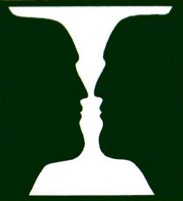
“Yin and yang can also represent two related aspects of one thing…Yin and yang properties are relative, not absolute, and can be changed.” - Dr. Qianzhi Wu, Foundations of Chinese Medicine
We live in a time that is characterized by wars of various kinds – the war on terror, the war on drugs, the wars in the Middle East, and the war on women just to list a few. War might have once been a struggle for the physical survival but now it seems that most armed conflicts are a struggle for the supremacy of beliefs. This is often true not just on a global scale, but on an interpersonal scale as well.
The thing is, ideas and beliefs are largely a product of perspective. I used to work in technical support at a company whose name rhymes with “hell.” When I worked in tech support all I heard were problems and complaints. After a while I started wondering why I was working at this crappy company which produced this crappy product. This attitude evaporated about a year after I left the company and started working in the corporate world. These “hell” computers turned out to be pretty darned bullet proof on the whole, demonstrating incredible resilience, even when handled with flagrant disregard by co-workers who treated them an awful lot like the gorilla in the commercial treats Samsonite luggage. They quickly became my go-to computer of choice.
What changed? The computers? The design? No. Same design, same manufacturers, same company. The only thing that changed was my perspective. Human beings spend their lives looking through a tiny keyhole in life and form a whole life philosophy from this extremely partial view. That’s where our limited (and limiting) beliefs come from.
If you want to change your world, change your perspective. Try to look at a different view of your challenges and you will find that those challenges change. All you have to do is change your mind.
Balance. 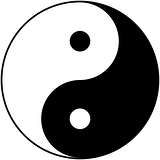
“The course of our everyday lives requires that we balance the interior process of nurturing the self (Yin) with being engaged in the exterior work of the world (Yang)."
“Wang Dao. This is the way to treat the patient without resulting in harm. Take the body as a whole rather than focusing on the problem and forgetting about the whole person. When you write a formula, always think of Wang Dao.”
“Yin Yang philosophy should be in all formulas. This gives the formula structure.” -Dr. Ma, Formulas 1
Acupuncture school seems to take every brain cell you have. School can become this huge thing that blocks your view of the rest of your world, even though it is only a small portion of your total life on this planet. We all know that if you ignore a plant, it will wither and eventually die of neglect. You can think of school as the big Yang portion of your life – it’s bigger than life, takes an awful lot of energy, and will float away and out of control unless you are careful.
Watch your relationships with yourself, your family, and your friends. There’s no quick and easy way to do this. You just have to remind yourself to pay attention. This is part of walking in balance, even if it means you have to do it deliberately.
Self-care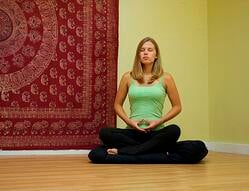
“When there is qi, there is life. When there is no qi, there is no life.”
“As one experiences the opening of the heart, this allows the qi from the universe to go to the entire body, removing the negativities that rob one of a life of perfect well-being.” – Master Li Jun Feng
When you sit down on an airplane and it finally takes off the staff stands up and starts giving their show about how to buckle your seatbelt and how to use your seat cushion as a floatation device. During the spiel the announcer says that in the unlikely event of loss of cabin pressure masks will fall down from the ceiling. In this rhetoric is an instruction to put your own mask on first if you are traveling with someone who is dependent on you for his or her physical well-being. For a long time this seemed to me like the height of selfishness. At some point I realized that this is not selfish, but vital. If you are incapacitated you cannot care for those who depend on you.
The same is true for those of us who have chosen to be healers and care givers. If you cannot care for yourself, you cannot care for your patients either. It is a great irony that the demands of going to school to become a healer can really break down your own health. Though it can be difficult to be consistent about caring for yourself while you are in school it is one of the most vital things you can do for yourself as a healer and as a human being.
Open your heart. Let the qi flow in. Care for yourself. Thrive.
Follow Your Own Path-resized-600.jpg?width=250&height=187&name=china_iconic_(3)-resized-600.jpg)
“Each channel has its’ own regular pathway, which includes an internal and an external course.” - Navigating the Channels of Traditional Chinese Medicine
When I squared my shoulders, took that deep breath and committed to the path of Chinese medicine I thought I was just making a career change. I’m still laughing over that one! That was my external path. I did not know at the time that there was an internal pathway as well. As it turns out, the internal path fuels the external. Without the internal path my acupuncture practice is just a hollow shell, a façade.
The internal path I’m talking about ties back into living from the love I feel for myself, the compassion for others that spills out of a heart full of love, and the connection with and guidance I feel from the Universe. I think all of us are here for a reason, to work our way through this life outfitted with those three components. This is your journey and the journey is the whole point of being.
A word of warning: the road may not go where you think it’s going to when you begin the next leg of your journey! Plan all you want to, but don’t get too attached to the plan or the outcome. The important thing is to follow your intuition, your path through this life.
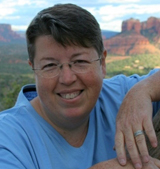 About the author: As the owner of Calhoun Acupuncture & Wellness in Austin, TX, Catherine Calhoun maintains an active clinical practice treating patients with conditions such as pain, allergies & respiratory infections, and substance addiction, as well as chronic disorders like arthritis, diabetes, neurological disorders, endocrine disorders, and cardio/circulatory disorders. A certified Usui Reiki practitioner and trainer, she also specializes in relaxation and meditation therapies such as reiki, medical qigong, and guided meditation. Ms. Calhoun is committed to implementing affordable healthcare options using oriental medicine and manages an on-site corporate wellness practice in addition to her private clinical practice. She is the owner and creator of CatsTCMNotes.com and has instructed at AOMA since 2012.
About the author: As the owner of Calhoun Acupuncture & Wellness in Austin, TX, Catherine Calhoun maintains an active clinical practice treating patients with conditions such as pain, allergies & respiratory infections, and substance addiction, as well as chronic disorders like arthritis, diabetes, neurological disorders, endocrine disorders, and cardio/circulatory disorders. A certified Usui Reiki practitioner and trainer, she also specializes in relaxation and meditation therapies such as reiki, medical qigong, and guided meditation. Ms. Calhoun is committed to implementing affordable healthcare options using oriental medicine and manages an on-site corporate wellness practice in addition to her private clinical practice. She is the owner and creator of CatsTCMNotes.com and has instructed at AOMA since 2012.



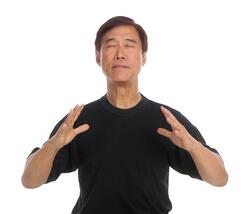
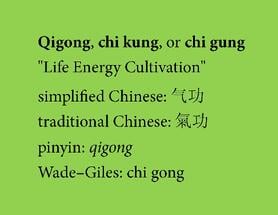 The word Qigong (chi kung or chi gung) is made up of two Chinese words. Qi (pronounced chee) is usually translated to mean the life force or vital-energy that flows through all things in the universe. The second word, Gong (pronounced gung) means work or cultivation. Together, Qigong means life energy cultivation.
The word Qigong (chi kung or chi gung) is made up of two Chinese words. Qi (pronounced chee) is usually translated to mean the life force or vital-energy that flows through all things in the universe. The second word, Gong (pronounced gung) means work or cultivation. Together, Qigong means life energy cultivation. What is Tai Chi?
What is Tai Chi?

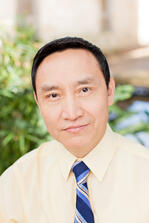 that you don’t need the acupuncture needles – they are just a convenience. Anything you can do with an acupuncture needle can be accomplished just as well with energy. It was one four second moment in a single lecture, but I’ve never forgotten it. It might be the one of the most profound moments of my education. I think of every treatment I give as a Reiki/Medical Qigong treatment. Acupuncture needles are just very convenient antennae which focus and transmit Universal Qi. It has made a huge difference in how I treat patients.
that you don’t need the acupuncture needles – they are just a convenience. Anything you can do with an acupuncture needle can be accomplished just as well with energy. It was one four second moment in a single lecture, but I’ve never forgotten it. It might be the one of the most profound moments of my education. I think of every treatment I give as a Reiki/Medical Qigong treatment. Acupuncture needles are just very convenient antennae which focus and transmit Universal Qi. It has made a huge difference in how I treat patients.
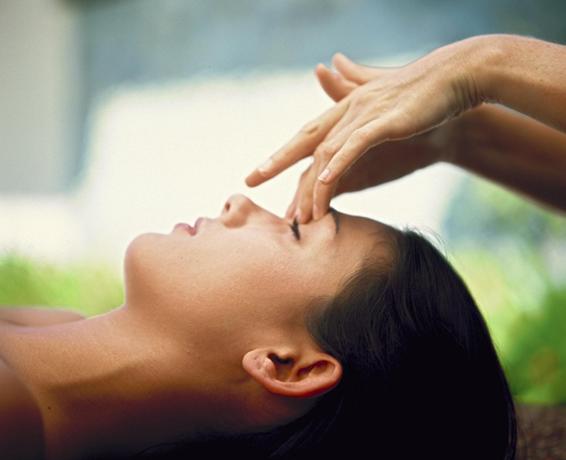
.jpg?width=230&height=263&name=master_li_junfeng_(4).jpg) healing session and meeting my teachers was more than 10 years. I enrolled in the master’s program
healing session and meeting my teachers was more than 10 years. I enrolled in the master’s program .jpg?width=239&height=216&name=cureville_clinic_2008_(2).jpg) Medical Qigong is one of the oldest branches of traditional Chinese medicine, predating acupuncture by thousands of years. Medical Qigong includes specific physical movements, breathing techniques, and mental imagery that direct the Qi within the body. Ultimately, the practitioner can control the Qi externally to heal others. In China medical qigong is used in hospitals to treat many ailments including tumors, cysts, paraplegia and hemiplegia, muscular atrophy, stress and insomnia, immune deficiency disorders, migraine headaches, and pain.
Medical Qigong is one of the oldest branches of traditional Chinese medicine, predating acupuncture by thousands of years. Medical Qigong includes specific physical movements, breathing techniques, and mental imagery that direct the Qi within the body. Ultimately, the practitioner can control the Qi externally to heal others. In China medical qigong is used in hospitals to treat many ailments including tumors, cysts, paraplegia and hemiplegia, muscular atrophy, stress and insomnia, immune deficiency disorders, migraine headaches, and pain..jpg?width=148&height=222&name=master_li_(2).jpg) as the qigong of unconditional love. Master Li tours the US, Canada, Asia, and Europe throughout the year sharing his wisdom, his understanding, his love. He has taught in more than 20 countries and has been teaching medical qigong at AOMA since 2002.
as the qigong of unconditional love. Master Li tours the US, Canada, Asia, and Europe throughout the year sharing his wisdom, his understanding, his love. He has taught in more than 20 countries and has been teaching medical qigong at AOMA since 2002.